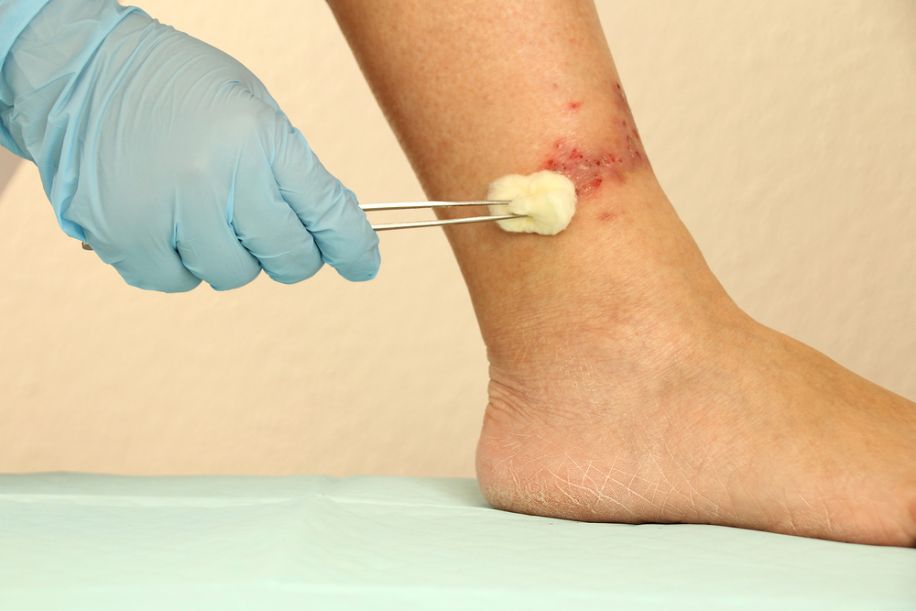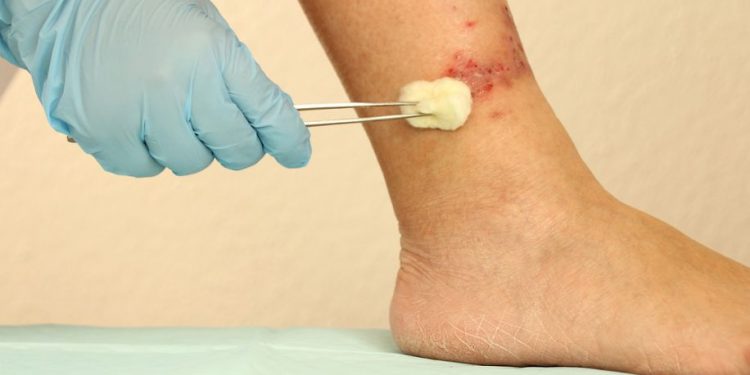If you have a leg ulcer, you may be feeling a variety of symptoms. These include swollen or hardened legs, discoloured skin, itching and a heaviness in the leg. Some ulcers also have a foul-smelling discharge.
The most common type of ulcer is caused by poor circulation in the veins in your leg. It happens when the valves in the veins aren’t working properly. They can be damaged by thrombosis (clots) in your veins, or by age and other medical conditions.
Your doctor may be able to help you get the blood moving in your veins and reduce the risk of developing a leg ulcer. Treatment may include sclerotherapy, medications to open your blood vessels and improve your circulation (vasodilators), and surgery to remove or repair a damaged vein.
You can help prevent a leg ulcer by elevating your legs above your heart when you sit or stand and wearing compression stockings (surgical) regularly. These steps can improve the circulation in your veins, which helps them move blood back to your heart.
Keep up with your regular exercise and healthy eating habits, too. This can help your body heal the damage to your skin and keep you fit and healthy. It can also help you maintain a normal weight.
See your healthcare provider as soon as you notice any ulcer symptoms to start treatment right away. Your doctor will make sure you have a proper diagnosis and a treatment plan to treat your ulcer, relieve pressure on your legs and (if you’re diabetic) get your blood sugar under control.

A leg ulcer can be painful, but it usually doesn’t cause you to feel sick or have a fever. You might also experience a feeling of heaviness or numbness in your legs. This is especially true if the wound is deep or large.
You’ll also need to use bandages and dressings on your ulcer at least daily to keep the area clean and dry. This can help your ulcer to heal and prevent it from getting infected.
Your healthcare provider may recommend you try home remedies and alternative treatments to promote healing, but these can also aggravate your condition. They should be used only in conjunction with a regular routine of medication, therapy and other treatment options.
In some cases, your doctor might prescribe a medication that treats a chronic leg ulcer, such as anti-inflammatory medicines or antibiotics. These medicines can help to speed up the healing process and reduce pain.
It’s important to talk with your healthcare provider if you notice any changes in the size or shape of a leg ulcer. Keeping track of the growth and changes will help you track your progress and ensure that your ulcer continues to heal.
Having the right treatment can improve your leg ulcer’s appearance and reduce the amount of time you need to take off work or school. This can also help you avoid complications such as cellulitis or limb loss.









